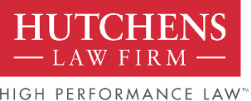When Typos Aren’t Enough to Give a Homeowner a ‘Free House'
In a recent opinion in In re Foreclosure of a Deed of Trust Executed by Thompson, the North Carolina Court of Appeals determined that a non-judicial foreclosure could proceed despite the existence of an error in the legal description of the deed of trust being foreclosed. The error consisted of an incorrect reference to the property being located in “Section II-C” of a subdivision when it was actually located in “Section III-C” of that subdivision. As a result of that error, the homeowners challenged the validity of the deed of trust and the petitioner’s right to foreclose. The homeowners contended the discrepancy was a patent defect rendering the deed of trust void and thus never transferring legal title to the property to the lender. The trial court disagreed and allowed the foreclosure sale. The Court of Appeals affirmed, applying decades-old principles of North Carolina real estate law which allow courts to examine extrinsic documents to clarify latent ambiguities in a property’s legal description. The Court concluded that:
[T]he erroneous reference in the Deed of Trust to “Section II-C” instead of “Section IIIC” is merely a scrivener’s error and creates only a latent ambiguity in the description of the property. This uncertainty may be remedied by examination of the four corners of the Deed of Trust and documents referenced therein. The Deed of Trust identifies the property as Lot 46 of a subdivision depicted on a plat “prepared by Parker & Associates, Inc., dated August 3, 2006 and recorded in Map Book 51, Page 149, Slide L-1485, Onslow County Registry.” This plat correctly identifies Lot 46 as being located in “Section III-C.” In addition, the Deed of Trust identifies the property with a street address and tax parcel ID number, both of which correspond to the information in the General Warranty Deed and the plat. Upon examination of the information in the record, in the context of the long-established jurisprudence on this subject, we conclude that the erroneous reference to “Section II-C” in the Deed of Trust did not render the document void and that the trial court did not err by allowing the foreclosure to go forward.
Although not groundbreaking in its use of extrinsic documents to rectify latent ambiguities in legal descriptions, the holding does break ground in applying that legal principle in a non-judicial foreclosure proceeding. In short, this opinion stands for the proposition that a lender can proceed with a non-judicial foreclosure (as opposed to filing a more complicated and costly judicial foreclosure action) even though there is a defect, albeit a latent one, in the deed of trust’s legal description.
Published by Michael B. Stein on April 20, 2017
